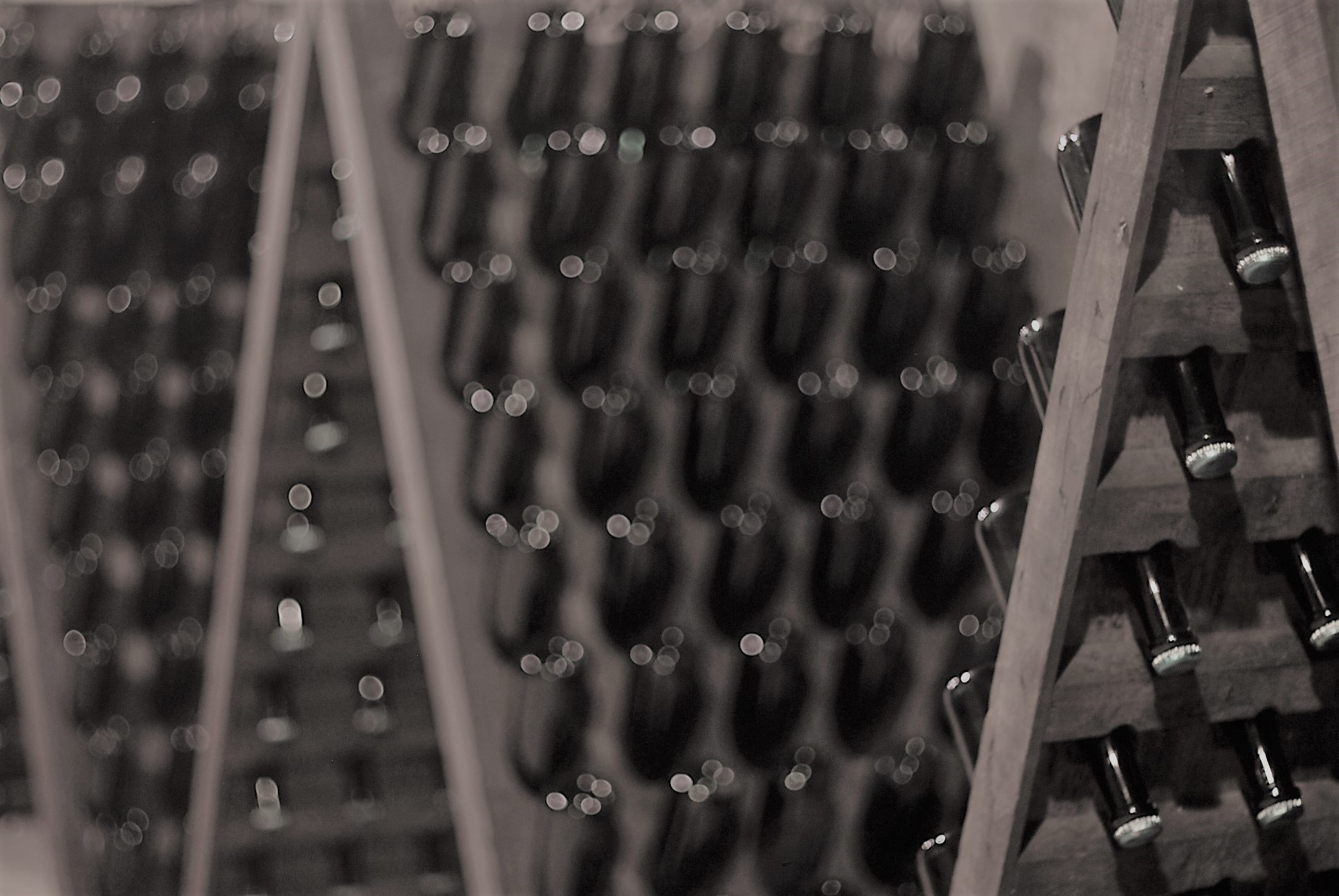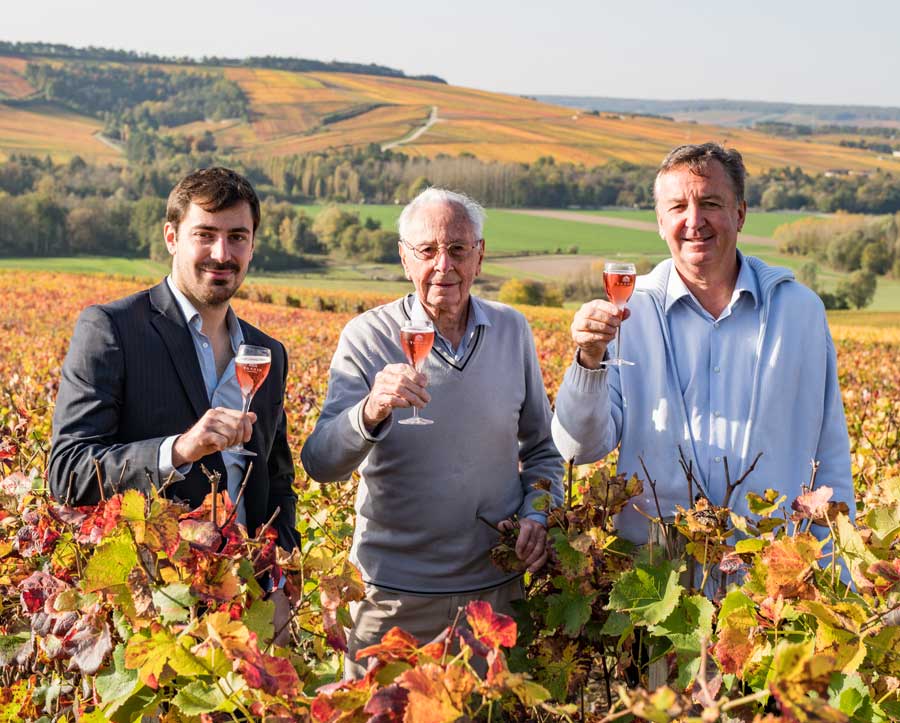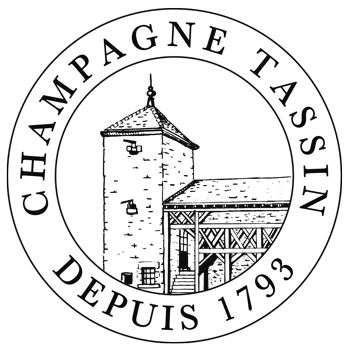From generation to generation
Champagne Tassin goes all the way back to the end of the 18th century, when our ancestors already grew vines in the Côte Des Bar.
Emile Tassin, our forefather, left us numerous testimonies from the beginning of the last century. At the time, the village growers used a communal wine-press and often had two activities.
In addition to working the vines and selling his wines, Emile ran a café-hotel-and-restaurant business, the nervous centre of local life. Upon his initiative, a collection of Tassin postcards came to be. Sold in the hotel, they highlight scenes of life and work of the era, such as this day of harvest of the year 1905.
As a testimony of this generation, this photograph of the 1935 harvest in which Marcel (on the right) is accompanied by his children Anne-Marie, Raymond, Jean-Marie and Bernard.

From generation to generation
Champagne Tassin goes all the way back to the end of the 18th century, when our ancestors already grew vines in the Côte Des Bar.
Emile Tassin, our forefather, left us numerous testimonies from the beginning of the last century. At the time, the village growers used a communal wine-press and often had two activities.
In addition to working the vines and selling his wines, Emile ran a café-hotel-and-restaurant business, the nervous centre of local life. Upon his initiative, a collection of Tassin postcards came to be. Sold in the hotel, they highlight scenes of life and work of the era, such as this day of harvest of the year 1905.
As a testimony of this generation, this photograph of the 1935 harvest in which Marcel (on the right) is accompanied by his children Anne-Marie, Raymond, Jean-Marie and Bernard.
The beginnings of making sparkling champagne wines
As from 1929, the Tassin family install their own press. Marcel, Emile’s son, has his chance to leave his mark in the history of the House. He starts to make and market sparkling wines under his own name.
He was one of the first in the village to embark on this adventure, encouraged by his uncle who had also tried it a few years earlier, with a handful of other visionary winemakers.
That was rare in those days when the majority of growers sold their grapes or wines directly to wine-traders.

The beginnings of making sparkling champagne wines
As from 1929, the Tassin family install their own press. Marcel, Emile’s son, has his chance to leave his mark in the history of the House. He starts to make and market sparkling wines under his own name.
He was one of the first in the village to embark on this adventure, encouraged by his uncle who had also tried it a few years earlier, with a handful of other visionary winemakers.
That was rare in those days when the majority of growers sold their grapes or wines directly to wine-traders.

Know-how as an inheritance
After the 1939-45 war, the Champagne region slowly rebuilds itself, a lot of fallow land having been left following the grape-phylloxera crisis and successive conflicts.
Bernard, only just out of adolescence, then puts his energy into the redevelopment of the vineyards. Planting-rights are successively granted, allowing the family-firm to gradually expand.
Bernard is particularly fond of the work in the cellar and is constantly improving the technique of carbonisation (making sparkling wine). At the beginning of the 1950s, he shares his experience with other winemakers in the village who want to start to produce wine too. He also transmits his passion to his children and even helps them develop their own firms.
History combines with the present
So it was that at the beginning of the 1980s, Michel moved to Loches-sur-Ource, centrally located between the three villages of the vineyards that had been passed on to him. He joined one of his sisters, Christine, to create the « Tassin Successeurs ».
Old arched-roofed cellars are notably refurbished and a new press appears in 2003.
Our history continues to be written in the present tense with the arrival of Thibault in 2015. Having at heart to share the ancestral know-how of our family-firm, he designed a reception-cum-tasting-area at the heart of our cellars.
Under his leadership, the area also turns to export, with the arrival of the first bottles of « Tassin Successeurs » Champagne on the American market.

History combines with the present
So it was that at the beginning of the 1980s, Michel moved to Loches-sur-Ource, centrally located between the three villages of the vineyards that had been passed on to him. He joined one of his sisters, Christine, to create the « Tassin Successeurs ».
Old arched-roofed cellars are notably refurbished and a new press appears in 2003.
Our history continues to be written in the present tense with the arrival of Thibault in 2015. Having at heart to share the ancestral know-how of our family-firm, he designed a reception-cum-tasting-area at the heart of our cellars.
Under his leadership, the area also turns to export, with the arrival of the first bottles of « Tassin Successeurs » Champagne on the American market.

